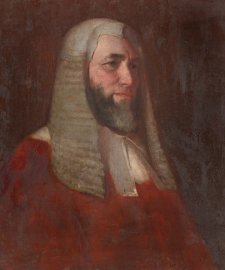Mary Windeyer (née Bolton, 1837-1912), women's rights campaigner, was one of the nine children of Robert Thorley Bolton, a clergyman who emigrated to New South Wales in 1839. Bolton was the Anglican minister in the Hunter Valley village of Hexham, less than ten kilometres from the Windeyer family estate of Tomago. In December 1857, Mary married William Charles Windeyer. The couple had nine children, one of whom died in infancy. A devout woman, Mary was encouraged in her various charitable works by her husband and influenced by his views. Her energies initially were directed to causes relating to orphans and infant health. In 1874, she supported the establishment of a foundling hospital (later the Ashfield Infants' Home) which the following year became a home for destitute, unmarried mothers and their babies. Windeyer's friendship with Sir Henry Parkes facilitated, in 1881, the passage of the State Children's Relief Act and the establishment of a board (on which Mary served) to oversee the fostering of children from orphanages. Mary was also a pioneer of the women's rights movement in Australia, supporting Windeyer's reform of divorce laws and campaigning for increased employment opportunities for women, sponsoring (among other projects) a shorthand writers and typists' society and hospital training for nurses. She was the inaugural president of the Womanhood Suffrage League of New South Wales (1891); a founder of the Women's Hospital, Darlinghurst (1896); and prominent in the Women's Christian Temperance Union of New South Wales. Her fifth daughter, Margaret, followed Mary into women's rights campaigns and, along with her mother, helped found the Women's College at Sydney University.
Temporary road closures will block vehicle access to our building on Sunday 13 April until 3:00pm.










